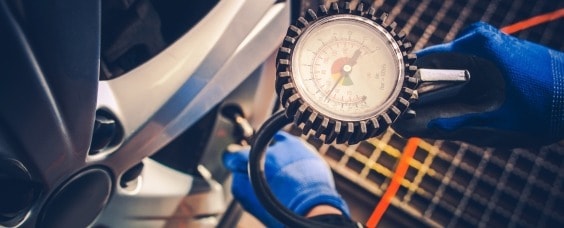Why tyre check?
Tyres primarily need to be checked for safety reasons. Having a blowout on the E611 to Abu Dhabi is going to be very dangerous, as well as costing you a lot of money. Ultimately, by checking tyres you ensure they are in the best possible condition for the trip.
Checking tyres will also provide early warning on uneven wear. By understanding what is going on under the truck, drivers can increase the lifespan of the rubber and save on fuel. This decreases your cost per kilometre.
Why is tyre checking so important in the Middle East?
Extreme weather places increased demands on tyres. So does driving in or around the desert. This makes tyre checking even more important for fleets based in the Middle East.
When to check TBR tyres?
All drivers should be walking around and checking their tyres as part of their standard pre-trip inspection. Steer, drive and trailer tyres should be checked before every journey.
What to check for in the tyres?
General condition – Look at the tyres to check if there are any bumps, bulges, exposed cords, or any other signs of failure.
Cuts and stones – You can expect to see minor cuts on tyres that travel such long distances each day. Check for deep cuts and lacerations, as these indicate more serious damage to the tyre. Also check for stones, particularly if there is a build-up of stones in one or more of the tyres.
Air pressure – Deflated tyres is one of the main causes of blowouts and tyres , as well as contributing to uneven wear and wasting fuel. Drivers should know the air pressure requirements for their vehicle. These will depend on the job and the load so the fleet manager should provide clear guidance as to the most appropriate tyre pressure.
Deflated tyres can be spotted through their look and feel. The exact air pressure of steer, drive and trailer tyres should be checked before departure, when the tyre is cold.
Punctures – When inspecting the vehicle, listen for air leaks and check the sidewalls for damage. Make a more thorough inspection of the tyre if you notice it is deflated. Keep spare valve caps with the vehicle and replace any that are missing during the inspection.
Tyre tread – A tyre with low tread depth is at risk of a blow out when it hits debris. Tyre tread depth can be checked visually. Low tyre treads should be reported to the fleet manager. Any tyre with a tread depth less than 1.6mm should not be used as per international standards. A Longmarch tyre can either be re-grooved or retreaded once it reaches to this level.
Dual tyres – Check for anything that may be wedged in between dual tyres, such as rocks, stones or road debris. These could fly out at speed during the journey. Ensure that both tyres have uniform pressure, otherwise it will result in dual touching and the inner sidewall of both tyres being damaged. It is very important to note that the tyre pattern and tread depth should be same on both tyres fitted in the dual position. Any difference in the tread pattern or tread depth will cause faster wear. Tyre tread depth difference in dual tyres should not be more than 3mm.
Uneven wear – An essential and often omitted part of a tyre inspection is to check for uneven and unusual wear. But it’s actually the most important piece of the inspection as it can foresee many other issues. Unusual wear is always caused by something, such as incorrect air pressure, wheel misalignment or overloaded tyres. Making this check part of a pre-trip inspection helps you manage difficulties as they arise.
What should I do when tyres need replacing?
A Longmarch representative will provide customised solutions for your fleet. Every fleet and every job is different, so it’s essential your tyres are ready for the challenges ahead.


